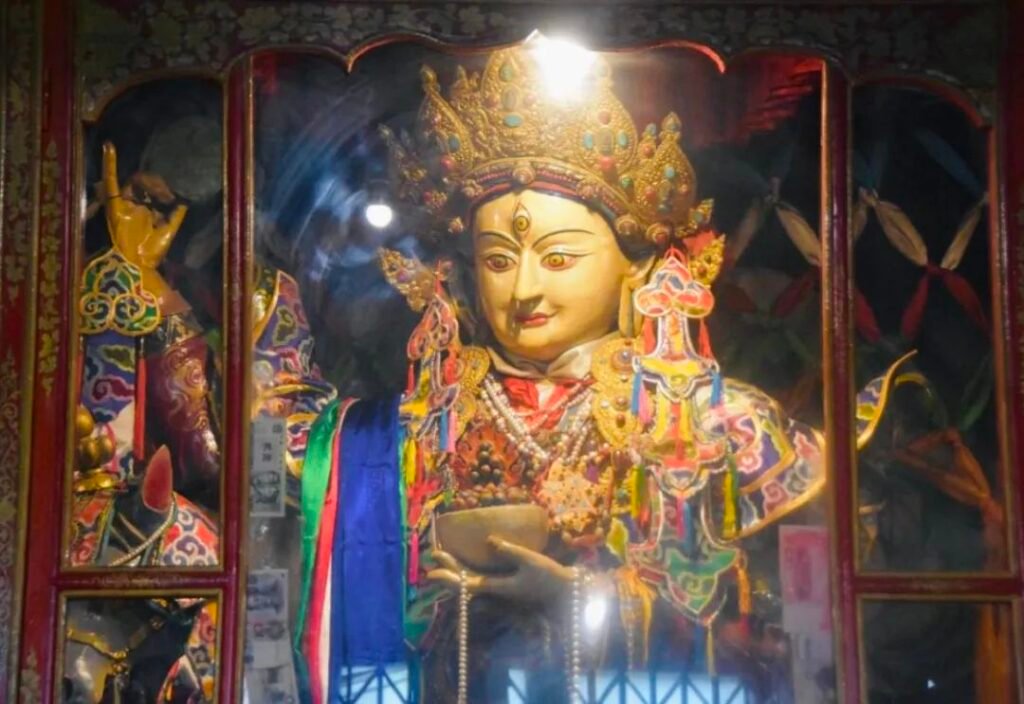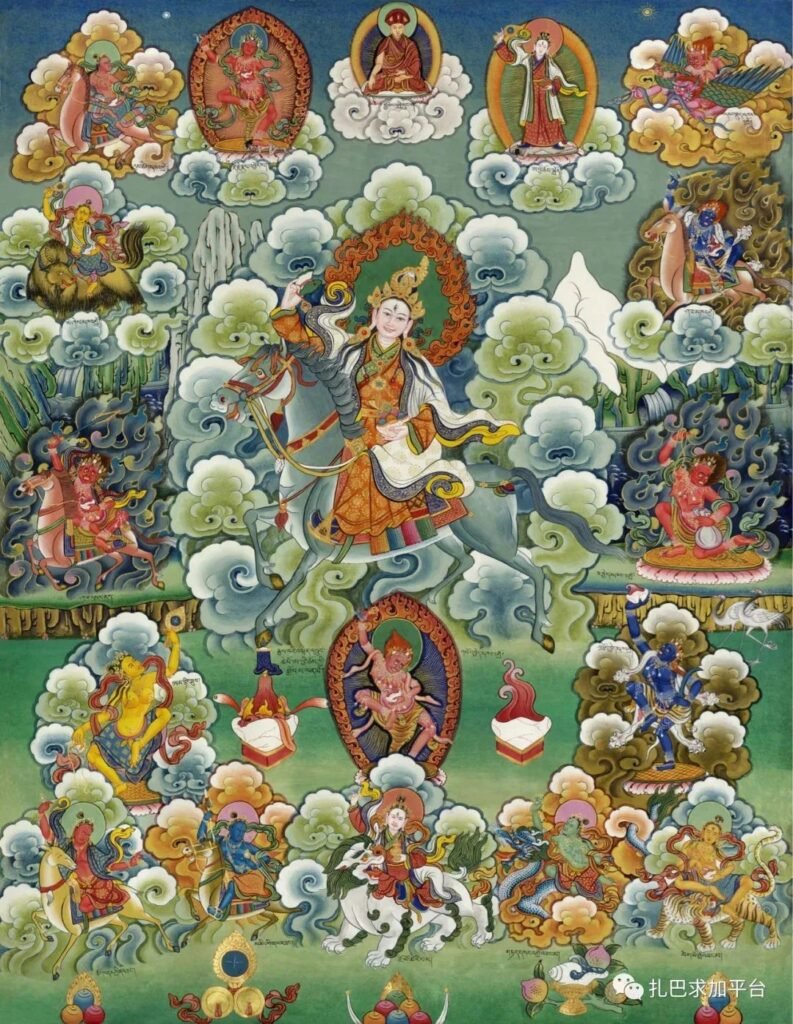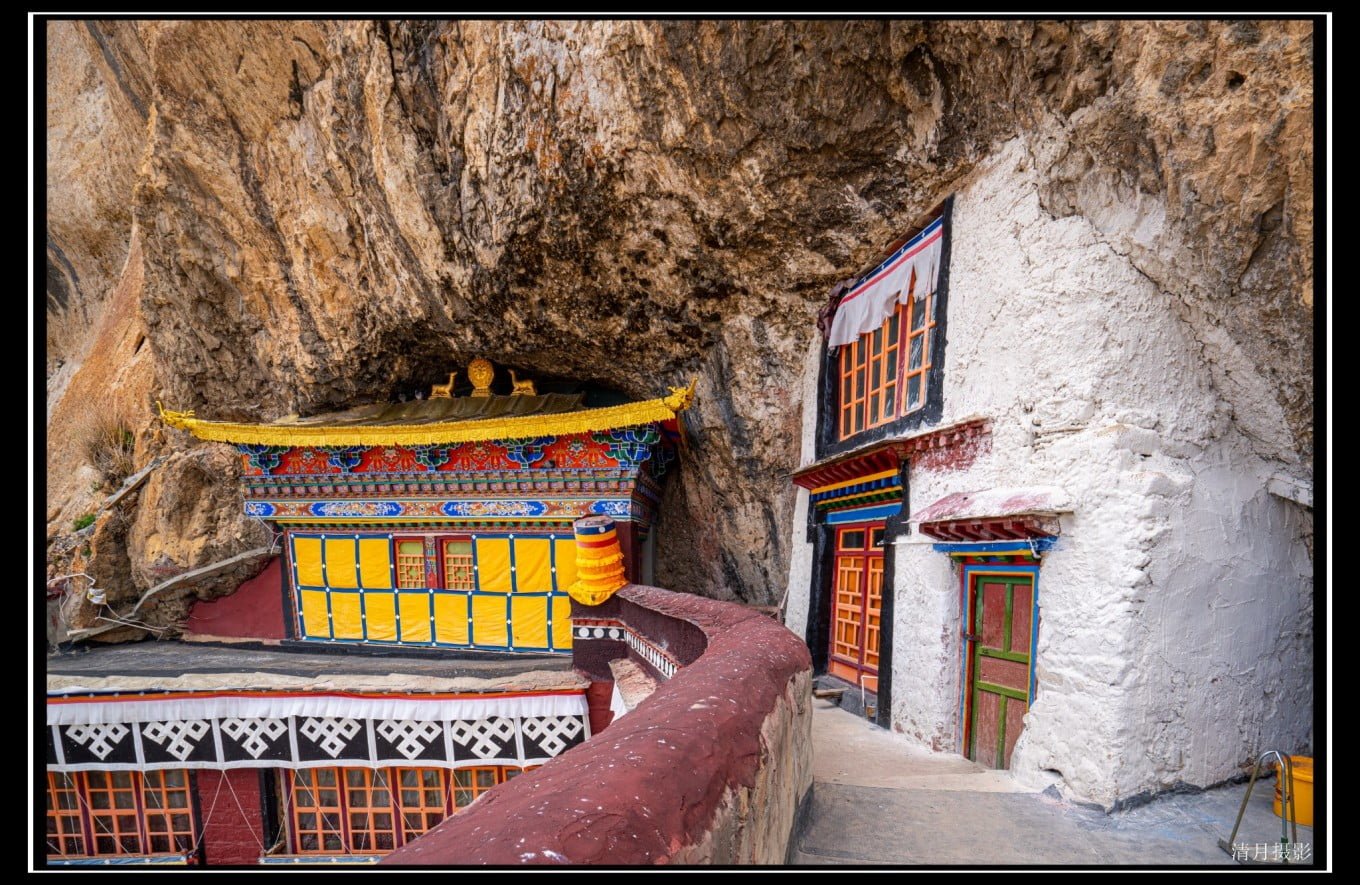An Unforgettable Odyssey from Wedi to Kham
In the midst of the 10th century A.D., a young woman from the Nanan family in the Drigung area embarked on an extraordinary journey. She traveled from Wedi to the uncharted lands of Kham, settling thoughtfully in today’s Batang area of Yushu. Many believe her decision was driven by a spiritual calling to spread Buddhism.
Dolma Dzatra’s Humble Beginnings
Initially working as a maid in a prominent family within the Batang grasslands, she quickly gained respect for her devoutness and dedication to scripture and Tara practice. Her piety and industrious nature led the community to lovingly refer to her as “Choekyi Dzatra,” as detailed in the historical document “Song Recorded in Kan Family History.”
A Simple Union and a Remarkable Lineage
Choekyi Dzatra eventually married a hermit from the local Gila family. With limited resources, their wedding was a modest affair, supported by their neighbors and friends. This event marked the beginning of an influential lineage, as one of her great-grandsons founded the esteemed Drikung Kagyu sect. She is honored as a “grandmother protector” (Aqi in Tibetan), symbolizing a dual role as both a spiritual and familial guardian.
Choekyi Dzatra of Batang: The Cradle of Drikung Kagyu
In Drikung Kagyu narratives, Choekyi Dzatra is portrayed as a divinely inspired figure with a mystical aura. Distinct from other Tibetan Buddhist protectors, her story represents a perfect integration of divinity, revered in the context of root tantra.
Deciphering Tantric Deities
The recognition of Tantric deities in Tibetan Buddhism is typically approached in four ways:
- Prediction: Involving prophecies usually given by the Buddha or higher gods like Bodhisattvas, these predictions carry great significance and authority.
- Manifestation: This helps in understanding a deity’s specific system and divine nature.
- Efficacy: Observing the actual effects in aspects such as body, speech, mind, merit, and karma.
- Practice: The most intricate method, involving complex tantric rituals and practices, often enveloped in religious mysticism.
The story of Choekyi Dzatra, from her modest beginnings to becoming a revered figure in Tibetan Buddhism, illustrates a journey of spiritual devotion and resilience. Her influence on the formation and development of the Drikung Kagyu sect underscores the profound connection between human endeavor and divine influence in shaping religious history.
Aqi Choekyi Drolma: A Dakini with a Tantric Essence
Aqi Choekyi Drolma, a female deity with worldly experience, is recognized as a dakini deeply rooted in tantric symbolism. Her existence and spiritual role have been validated by renowned predictions, including those found in the “Great Fangguang Bodhisattva Tibetan Manjushri Root Ritual Sutra.”
ང་ཡི་བསྟན་པ་སྙིགས་མ་ལ། ། བྱང་གི་ཕྱོགས་ཀྱི་གྲོང་ཁྱེར་དུ། ། རྒྱལ་བའི་ཡུམ་གྱི་སྤྲུལ་པ་ནི། ། སྒྲོལ་མའི་མིང་ཅན་འབྱུང་བར་འགྱུར། །
Prophetic Acknowledgement in Drikung Kagyu
Esteemed monks of the Drikung Kagyu tradition firmly believe that Aqi Choekyi Drolma is the “Dolma of the Northland,” as prophesied. However, some interpretations also associate this prophecy with Maji Raj Drolma, another significant female figure in Tibetan Buddhism.
The Divine Manifestation of Aqi Choekyi Drolma
The masters of Drikung Kagyu beautifully summarize her divine nature, acknowledging her as an incarnation of Vajra Yogini, thus identifying her as a dakini embodying the wisdom of emptiness. This succinct summary encapsulates her godhead positioning within the tradition.
ཆོས་ཀྱི་དབྱིངས་སུ་ཡུམ་ཆེན་མོ། ། གསང་ཆེན་ཀྱི་གནས་སུ་རྒྱལ་ཡུམ་རྣལ་འབྱོར་མ། ། ཨོ་རྒྱན་རིགས་སུ་རྡོ་རྗེ་རིགས་ཀྱི་ཌཱ་ཀྀ་མ ། ། གཞོ་སྟོད་ཀྱི་གནས་སུ་ལས་ཀྱི་མ་མོ། །

The Head of the Female Deity: Vajrayoginiརྡོ་རྗེ་རྣལ་འབྱོར་མ།
The source god or birth god of Aqi Chogyi Dolma is regarded as Vajrayogini, which is largely due to the positive effects of Aqi Buddha in the two fields of secularity and divinity. In the general cognition of practitioners or folks, the practice of Aqi Dharma means the rapidity of efficacy, which is reflected in Vajrayogini.
The Tantric Buddhism Perspective
Vajrayogini (རྡོ་རྗེ་རྣལ་འབྱོར་མ) , as an important part of Tantra, has always been considered as one of the most important methods in Tantra. Effectiveness”, so it has been vigorously practiced by the major Tibetan sects, mainly the Kagyu Sect. It can be seen that whether it is Vajrayogini’s “superior efficacy” or Aqi’s own “rapid efficacy”, both of them show a high degree of similarity in the release of efficacy. I think this may be an important theoretical basis for Aqi Buddha Mother to be identified as the incarnation of Vajrayogini.
According to the narratives of Master Marpa and Master Juepa, Achi Buddha Mother exhibited incredible efficacy as Vajrayogini in essence, but she maintained a close connection with Auspicious Goddess (Mother of Smoke and Charcoal) at the level of manifestation of efficacy . Therefore, some people also call Aqi Buddha Mother “དཔལ་ལྡན་ལྷ་མོ་ཨ་ཕྱི་ཆོས་ཀྱི་སྒྲོལ་མ”. In addition, the two also have similarities in image, each other’s specific The connection remains to be studied.
In the eyes of today’s practitioners (including the past, of course) , Aqi Buddha Mother seems to be a casual and natural worldly protector. She is not too harsh on the status of practitioners, and she is willing to give cordial responses to pious desires. It is said to have shown a powerful blessing in the realization of wisdom. However, in the eyes of some practitioners, this kind Buddha mother can also be a magic pestle to destroy enemies (this is also the potential characteristic of Ah Qi’s ability to become a Dharma protector) , and a bloodthirsty dakini with fangs.

The statue of Aqi in Drigung Dansati Monastery
གདན་ས་ཐེལ་དུ་ཡོད་པའི་ཨ་ཕྱི་འདྲ་སྐུ།
What we need to mention here is that Tantric Buddhism presents a world of non-dual opposites. Although the gods have different images of tranquility and anger, the effects of release in actual cognition are often quite different. For example, dakinis, like angels in the world of Christ, often appear slowly when the practitioners need to obtain a foreshadowing or attain enlightenment, incarnated as messengers conveying a certain positive meaning.
However, when practitioners break certain taboos, these beautiful gods can also immediately turn their backs and become the pushers for practitioners to fall from the peak of enlightenment to the endless hell. The means are not without horror. Therefore, smart practitioners often face up to the dangers of their existence when they use the convenient methods of Tantra to obtain what they need, and they can even do a good job of avoiding risks.
Aqi Choekyi Drolma’s Dual Nature
Going back to the contradiction presented by Aqi Buddha Mother, we may generally summarize it as half-quiet and half-angry. And this self-contradictory image is also reflected in her resident image.
The most common image of Aqi Buddha Mother today is often a young lady wearing a five-Buddha crown, exquisite robes, and various precious accessories. Eye. She holds a double-sided drum in her right hand, and holds a Gabala bowl in her left hand on her chest. She rides like this on a soaring young horse, responding to the practitioner’s sincere prayer in time, accompanied by the drum The sound of knocking appeared in the world of pure vision.
It can be seen that this is a typical Tantric image, but it does not have too many elements of anger, so it is called half-quiet and half-angry. But if we look carefully, we may be able to boldly speculate that the image of Aqi Quji Zhuoma presents a collection of Buddhist Tantric female gods . ) and the collective elements of the three protectors. The shadow of Vajrayogini can be seen from the Buddha crown that symbolizes the deity, and Tara, the god of wisdom, can be seen from the third eye that symbolizes wisdom (the resident Ah Qi has always relied on Tara, including her name is also derived from Tara. Mother) , and from her mount, it can be seen that it is an auspicious Tianmu-style guardian image that comes and goes when called.
In addition, she is the image of a grandmother in traditional Tibetan costumes. Unlike other high-ranking Tantric gods, Aqi appears amiable and amiable. She has absorbed the advantages of other important female gods and gathered a powerful comprehensive form. The attitude of being close to the people establishes an equal and natural link with the general public.

Achi and his family ཨ་ཕྱིའི་འཁོར་འབངས་དང་བཅས་པ།
It should be said that Aqi Quji Zhuoma is a concentrated appearance of female gods from India after the completion of localization of Tibetan Buddhism. It can be regarded as an in-depth portrayal of some fine qualities of Tibetan traditional women from the perspective of theology.
In addition, some scholars believe that Aqi worship embodies some elements of Tibetan matriarchal society, which is of course unknown. However, the resident Aqi Buddhist mother did retain a distinct brand of ancestor worship, and based on this, she played a leading role as a female power. Based on such a cultural tradition, she should also be a traditional woman who manages her family painstakingly in real life. At the same time, she does not forget to show her religious ideas in a timely manner. She has single-handedly dominated the prosperity of the Gila family by giving birth to children, even at the end of her life. She also has high hopes:
བུ་དང་ཚ་བོའི་དོན་དུ་ནི། །
རང་གི་སྒྲུབ་ཐབས་རང་གི་བྱས། །
Cultural Significance and Ancestral Worship
This last word may have contributed to her successors’ promotion of her as the patron saint of the family, who firmly believe that her grandmother’s grace can benefit 15 generations or more. With the prosperity of the Drikung Kagyu, her status has risen. She has been promoted from a guardian deity to a Buddhist Dharma protector. She began to have a whole set of gods and relatives, and derived various rituals and ceremonies with different but similar functions. So far, Aqi has become a cultural form representing the fusion of gods, occupying a place in the Dharma protector halls of various sects and in the spiritual halls of countless practitioners.
Today, this Aqi Chogyi Drolma, who has multiple identities such as the great-grandmother of the founder of the Drikung Kagyu, the guardian of the sect founded by her, and the mother of Vajrayogini, among the many sayings about her, she can be the A beautiful woman who keeps her mouth shut can also be a high-ranking esoteric image. This contradiction prompts her to become the existence of a human-god medium, which reflects the Buddhist belief that the public desires to transform from a human to a god, or the ultimate level. relief.
ཨ་ཕྱིའི་གཟུངས་སྔགས་ནི།
ཨོཾ་ཧྲཱིཿ དྷརྨཱ་ཏཱ་རེ་མ་མ་ཙཀྲ་སྭཱ་ཧཱ།
Om Shedama Dali Mama Zha Zha Soha
references
འབྲི་གུང་གསེར་ཕྲེང་། འབྲི་གུང་བསྟན་འཛིན་པ ད་མའི་རྒྱལ་མཚན་གྱིས་མཛད།
ཆོས་འབྱུང་མཁས་པའི་དགའ་སྟོན། དཔའ་བོ་གཙུག་ལ ག་ཕྲེང་བས་མཛད།
ལྷོ་རོང་ཆོས་འབྱུང་། རྟ་ཚག་ཚེ་དབང་རྒྱལ་གྱི ས་མཛད།
འབྲི་གུང་ཨ་ཕྱི་ཆོས་སྒྲོན་གྱི་རྣམ་ཐར། ར་སེ ་དཀོན་མཆོག་རྒྱ་མཚོས་བརྩམས།
The Elusive Lady of Nanam: The Elusive Lady of Nanam in the eyes of a foreign researcher
Transmutation from Man to God: From the Perspective of Anthropology: The Belief Culture of Drigung Dharma Protector Aqi as an Example (Master’s Thesis of Tibet University Pasang Norbu)





















